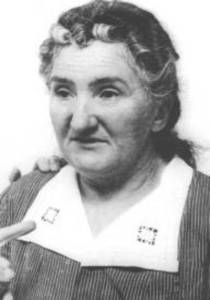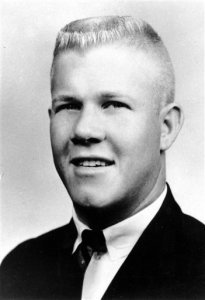This list would be so much easier to write if we were allowed fictional characters: Hannibal Lecter; Sherlock Holmes’ nemesis Moriarty; Norman Bates and his motel; plus many, many, more. The fact that there are so many psychopaths portrayed in film, TV and literature suggests that there is a degree of fascination with this extreme of personality types. Psychology as ever, has something more precise to say than popular literature and there have been several different approaches in defining what constitutes psychopathy.
Cleckly (He of the “Three faces of Eve” fame) defined psychopaths as having :
- Boldness in committing their crime
- Disinhibition, meaning an inability to control impulses
- Low anxiety , an ability to remain cool and opportunistic
- Meanness which others have defined as a lack of empathy for other people
This is not the sole definition and recently, Professor Robert Hare has suggested, after 40 years of study, that psychopaths may be more common than we think. Not on the scale of Ted Bundy or Harold Shipman, but in everyday life. Hare cites the immoral behaviour of corporate types for example, the behaviour of the top executives at the Enron Corporation, who subjected the state of California to rolling and unnecessary power cuts and robbed the pensions of their employees and investors by encouraging them to buy stock which was ultimately worth nothing. Who knows how many people were killed indirectly by the callous behaviour of Geoffrey Skilling and Kenneth Lay. Their story is told elsewhere and they don’t make the cut.
Neither do the power–hungry dictators such as Hitler, Pol-Pot, Saddam Hussein or even Vlad the Impaler who used mass murder and torture as means of subjugating the rest. Also excluded are those like Amelia Dyer, the Victorian baby farm killer, whose motives for killing up to 400 babies were mercenary, combined with a degree of amoral behaviour? So who does make the cut?
-
Harold Shipman

Harold Shipman
Harold Shipman was a doctor in general practice in Yorkshire, England. He worked alone in what is known as a single handed practice. Born into a working class background, Shipman had watched his beloved mother die of lung cancer when he was 17 and had witnessed in her final days, community nurses and doctors come to inject what was to become his modus operandi, morphine, administered to relieve pain.
For many years the death rate amongst elderly female patients in Shipman’s practice had been noticed to be high and he had been reported by concerned medical practitioners, but no conclusive evidence could be found since most of these patients had been cremated. Shipman was eventually caught when in 1998; an elderly patient’s daughter queried a change in a will made shortly before her mother’s death leaving all her money to Dr Shipman. Kathleen Grundy had been certified to have died of old age, but when a post mortem was carried out, it was found she had enough diamorphine in her system to kill her. While there appeared to be a financial motive for his last crime, this was by no means the motive for other victims he had sent to an early grave.
After his conviction for murder, an enquiry was set up to both try to gauge the extent of his crimes and also to look at the systemic failings which had allowed a GP to continue with a murderous rampage for so many years. The Shipman Enquiry concluded that although he had in all probability killed more than 250 victims beginning his murderous spree in 1971 when he worked in Pontefract General Hospital and continuing throughout the whole of his 27 year medical career. The inquiry also noted that the body responsible for oversight of doctor’s ability to practice safely, the General Medical Council, was more concerned with doctor rather than patient interest. Chillingly it has been recently suggested by researchers at the University of Dundee, that even with changes to practice as a result of the Shipman Enquiry should a similar events occur again it might take up to 30 victims before anyone noticed!
Like many psychopaths before him, Shipman maintained control over others to the last. He committed suicide in 2004 by hanging himself in prison the before his 58th birthday. It is speculated that amongst the motives for his suicide was the fact that his wife, Primrose, could claim his national health widow’s pension.
-
Anders Behring Breivik

Anders Behring Breivik
On the 22nd July 2011 Anders Breivik bombed a government building killing 8 and then heading to the island of Utøya where he shot 69 young people who were taking part in a Norwegian labour party summer camp. In total he killed 77 people that day. Without remorse or concern that his youngest victim was a mere 14 years old, he declared himself a political activist and demanded that his manifesto be made public.
It is not so much the act itself which makes Breivick a psychopath, but the manner in which he carried out the planning of his atrocity and his attitude since.
Breivik’s early life is probably the seat of his later activities. He was brought up by his mother, who, it was claimed, sexualized him from an early age and had herself, some psychiatric issues. Social workers tried to remove him from the family home and his father tried for custody too, but to no avail. The picture of Anders youth is somewhat contradictory in that some witnesses claimed he was amoral and different, whereas others recall a young man who was kind and just like everyone else.
What is clear though is that he planned his massacre with precision over a period of several years and total lack of empathy for his intended victims and has shown non since. Unlike Shipman, Breivik confessed to his crimes and published a manifesto stating his reasons for it. Psychiatric assessment of Breivik took time, but the diagnosis which has been accepted is that of “Narcissistic Personality Disorder.” Narcissists cannot see the world from another’s viewpoint and have an inability to be self-critical; in particular failing to see the harm they do to others and without conscience.
Breivik was found guilty on all counts and although his sentence is not “life” as we know it, it is unlikely that he will ever be released. Like other psychopaths, he spends his time writing letters and making appeals to others, seeking always to win control over others without any understanding of the terrible things they have done to others.
-
Ted Bundy

Ted Bundy
Theodore (Ted) Bundy is perhaps the most well-known serial killer in the history of the United States. Between 1974-1978 he is believed to have kidnapped, assaulted and killed some thirty young women across several states. Because Bundy did not give a complete confession of his activities, it is believed that he may have begun his murderous rampage at the age of 14, in 1961 and over his lifetime killed many more.
Of all the psychopaths on this list, Bundy is the coolest, most calculating and ultimately the most controlling of all. He sought to delay his execution by promises of more confessions and information. Toward the end of his life he even attempted to use his status to try to become a type of consulting criminal to help police solve other serial killing sprees!
In common with many other psychopaths, he had a rocky childhood which may have contributed towards his psychopathic tendencies later in life. It is believed that his violent grandfather may also have been his biological father. Ted lived with his grandparents during his formative years, believing his mother was his elder sister. The discovery of her true identity rocked him.
As an adult Bundy developed and honed a method of gaining the trust of young women, often by feigning injury. He would then render them unconscious or murder them, sexually assault them alive or dead often returning to bodies many times until putrefaction made further sexual contact impossible.
Evidence that finally convicted him included a careless bite mark on the buttock of one of his victims, and fibres from a faulty weave of cloth on clothes he had worn. Once convicted and sentenced to death he began to confess to his crimes and tried to gain some kudos from helping to solve the Green River Homicides. Even to the last minutes before going to the electric chair on January 24th 1989, he tried to retain control over others refusing to confess to murders which he may well have committed but were outside his self-proclaimed confession criteria.
-
Leonarda Cianciulli

Leonarda_Cianciulli
In the records of psychopaths from history there are relatively few women. It is a truism that male psychopaths outnumber female by a factor of around nine to one. Leonarda Cianciulli didn’t kill many people, only three in fact, but the thinking behind it, what she did with the bodies and how she behaved at her trial confirmed her as a true psychopath.
Leonarda was born in 1893 and had a fractured childhood but a relatively happy, if poor marriage to her husband Rafaele. She had 17 pregnancies altogether, with only 4 of her children surviving infancy. She was determined as any mother should, to protect her children as they grew into adulthood, but her methods were extreme.
In 1939 as Italy approached war, her eldest son and favourite Giuseppe became of age to be called up for war service. Years before she had been told by a fortune teller that all of her children would die. She decided that desperate situations required drastic measures. For some reason she felt that human sacrifices would save her son. She set about selecting victims who would not be missed. Each time she concocted a story to make the victim believe they were moving from the area to a job, for a husband etc.. She then murdered each one, dried their blood and mixed it with flour to make teacakes and boiled their body fay with caustic soda and cologne to make soaps, which she gave away. At her trial she coolly explained what she had done and why she had done it, and even corrected the prosecution on matters of detail no remorse at all.
The fortune teller’s prediction that she would go to prison and die in an asylum came true because she died in Pozzuoli asylum in 1970. History does not relate what happened to poor Giuseppe.
-
Charles Joseph Whitman

Charles Joseph Whitman
One of the most recurring questions which psychologists ask about abnormal behaviour is “is it nature or nurture?” The answer isn’t a simple one. Some conditions seem to be more common in families even when members may have grown up in different environments through adoption. What is true is that we are all a product of both our genes and the environment we grow up in. Reading the above cases of psychopaths however, with their broken and disjointed early lives, you might jump to the conclusion that psychopathic behaviour is mostly a result of nurture, the way we are brought up. The case of Charles Whitman however, challenges that this may not always be the case.
Charles Joseph Whitman came from a home where there was domestic violence, but unlike the Ted Bundy’s of this world, he vowed never to be like that to his wife. He was both a marine and a student and appeared at the end of his life to be working hard to support himself through college. In the weeks before his death however ha had had some stress and had begun to take amphetamines to help him cope with exam pressure and part time working. He had also been suffering with headaches which he said were truly terrible.
In the early hours of August 1st 1966 he killed his mum and wife and resumed writing a suicide note which had had begun the previous evening. In the note he made provisions for their dog and that any of his residual moneys be donated to a mental health charity to try to help prevent further occurrences of the events which were about to unfold. He drove to the university at Austin Texas and climbed the central tower, on the way killing three people and injuring three others. Once on the observation deck he began shooting people at random. He killed 11 people plus an unborn child and he injured 33 others. Eventually he was shot many times by policemen who climbed the tower and at much risk to themselves had sneaked up on him from behind.
Whitman had seen many doctors in the year prior to the mass killing. He had told them of his irrational and violent urges and his fears had been dismissed. In his suicide note he asked that his brain be dissected to see if there was a biological reason for his behaviour. Investigations of his brain tissue resulted in the discovery of a glioblastoma in his right frontal lobe. The frontal lobes are where the higher functions of the brain are located.
References:
- Cleckley, H. (1941) “The So-called Psychopathic Personality, With Special Emphasis on his Status in the Selective Service.” Journal of the Medical Association of Georgia, 30, 466–472
- Elkind, P & McLean, B: The Smartest Guys in the Room: The Amazing Rise and Scandalous Fall of Enron Penguin 2013
- Hare R.D. & Babiak , P : Snakes in Suits: When Psychopaths Go to Work Harper Business Books (2007)
- Lavergne G: A Sniper in the Tower: The Charles Whitman Murders University of North Texas Press 1997
- Sitford, M: Addicted to Murder : The True Story of Dr. Harold Shipmanebury press 2000
For number 4 and 5 I don’t think they were psychopaths actually far from it for the women although her murders were calculating she did it out of love for her son I think that she was probably scitzophirinic since she believed that she could solve it through human scacrifices. As for the 5th psychopaths are known for having the belief that they are superior and it isn’t like them to kill themselves.